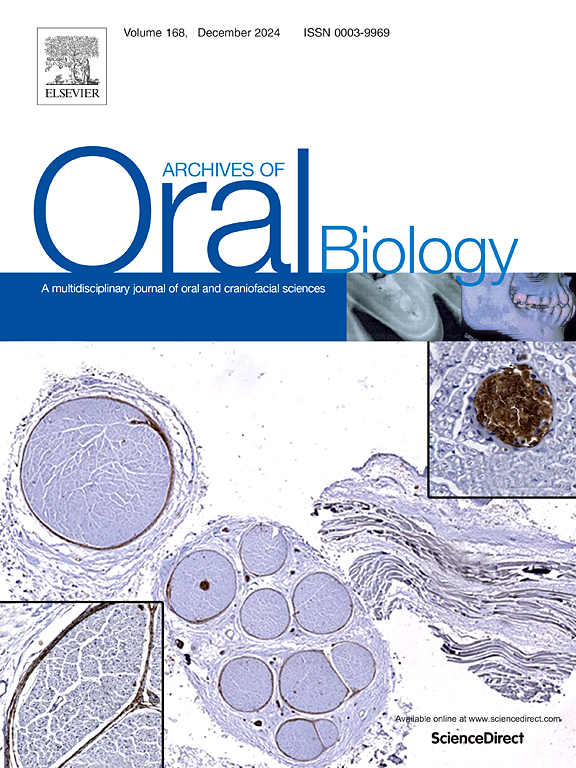The effect of Hypoxia-Inducible Factor-1a stabilization on bone regeneration during distraction osteogenesis: A systematic review of animal studies
IF 2.2
4区 医学
Q2 DENTISTRY, ORAL SURGERY & MEDICINE
引用次数: 0
Abstract
Objective
This systematic review described Hypoxia-Inducible Factor-1a stabilization or upregulation approaches along with underlying signaling pathways and assessed bone regeneration, angiogenesis, and consolidation time during DO in animal models.
Design
A comprehensive and systematic search of electronic databases including PubMed, Scopus, and ScienceDirect was performed till December 26, 2023. The search was limited to English articles, and no time restrictions were applied.
Results
A total of 14 studies met the inclusion criteria and were included for final review. Four methods have been shown to activate the HIF pathway including genetic, pharmacological, mechanical, and cell preconditioning approaches. Deferoxamine (DFO) was administered as a pharmacological hypoxia-mimicking agent in many studies reporting acceptable outcomes on bone regeneration and acceleration of bone consolation. Applying mechanical loads at the optimal rate and amplitude serves as a minimally invasive approach with acceptable results. HIF-related signaling pathways increase osteogenesis and angiogenesis during DO, potentially through VHL/HIF-1a/VEGF, Wnt/β-catenin, and Mesenchymal-Epithelial transition (MET) signaling pathways.
Conclusion
Activation of HIF-related signaling pathways enhances and accelerates bone regeneration during the consolidation phase of distraction osteogenesis. The most feasible approach with the least side effects must be selected for further clinical studies.
低氧诱导因子-1a稳定对牵张成骨过程中骨再生的影响:动物研究的系统回顾。
目的:本系统综述描述了缺氧诱导因子-1a稳定或上调的方法以及潜在的信号通路,并评估了动物模型中DO期间的骨再生、血管生成和巩固时间。设计:到2023年12月26日,对PubMed、Scopus、ScienceDirect等电子数据库进行全面系统的检索。检索仅限于英文文章,没有时间限制。结果:共有14项研究符合纳入标准,并被纳入最终审查。有四种方法可以激活HIF通路,包括遗传、药理学、机械和细胞预处理方法。去铁胺(DFO)作为一种药物缺氧模拟剂在许多研究中报告了可接受的骨再生和骨安慰加速的结果。以最佳速率和振幅施加机械载荷是一种微创方法,效果可接受。在DO过程中,hif相关的信号通路可能通过VHL/HIF-1a/VEGF、Wnt/β-catenin和间充质-上皮转化(MET)信号通路促进骨生成和血管生成。结论:hif相关信号通路的激活可促进牵张成骨巩固期骨再生。必须选择最可行、副作用最小的方法进行进一步的临床研究。
本文章由计算机程序翻译,如有差异,请以英文原文为准。
求助全文
约1分钟内获得全文
求助全文
来源期刊

Archives of oral biology
医学-牙科与口腔外科
CiteScore
5.10
自引率
3.30%
发文量
177
审稿时长
26 days
期刊介绍:
Archives of Oral Biology is an international journal which aims to publish papers of the highest scientific quality in the oral and craniofacial sciences. The journal is particularly interested in research which advances knowledge in the mechanisms of craniofacial development and disease, including:
Cell and molecular biology
Molecular genetics
Immunology
Pathogenesis
Cellular microbiology
Embryology
Syndromology
Forensic dentistry
 求助内容:
求助内容: 应助结果提醒方式:
应助结果提醒方式:


